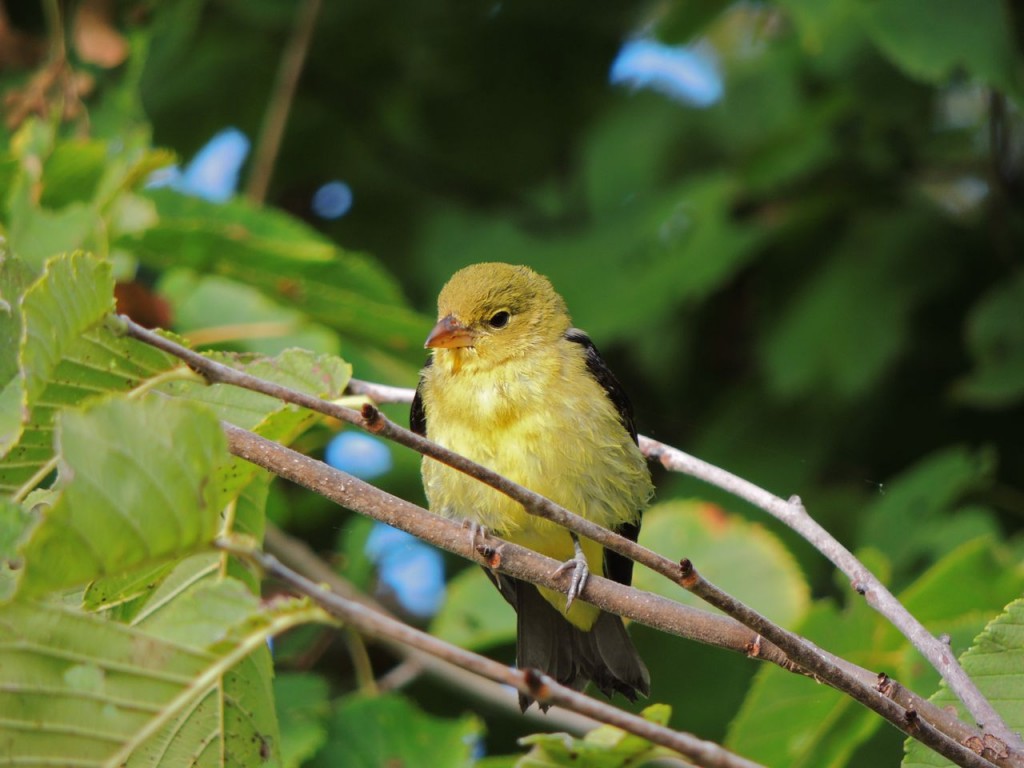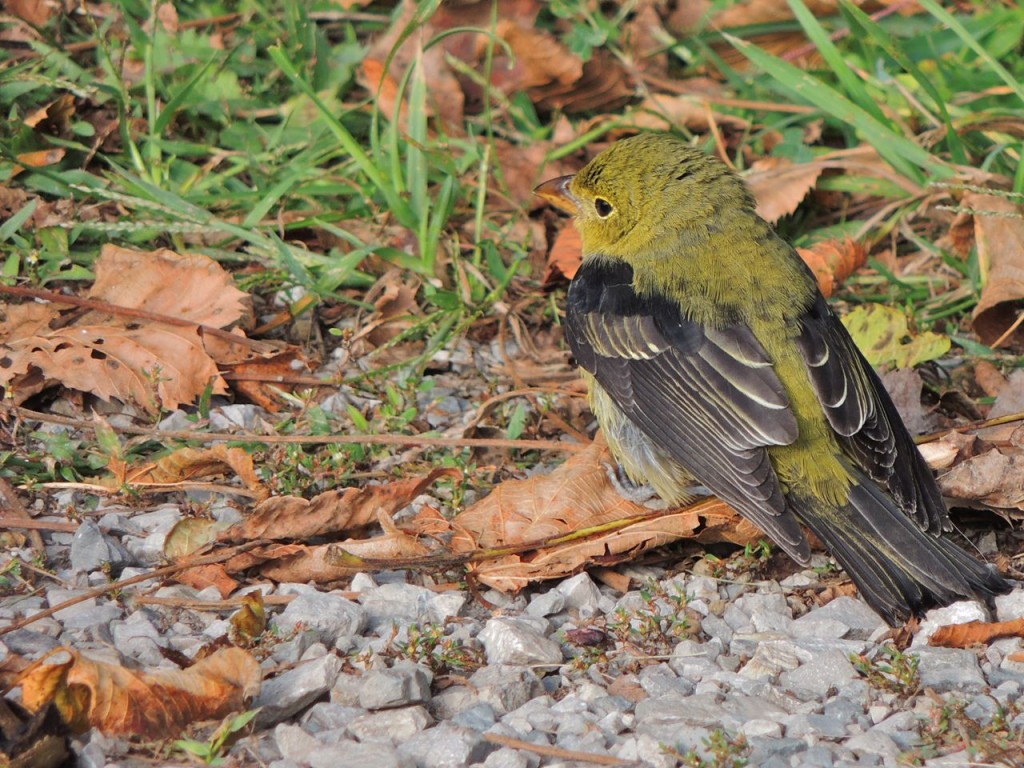22 September 2015. Ruthven Park, Cayuga ON. I was back at the bird observatory today ready to do the daily census. It was early when I arrived, a touch on the cool side and quite dewy, so I took part in a bit of bird- banding for a while.
Banding is not a time to linger too long with a bird in your hand, they have enough stress to deal with without a lot of oohing and aaahing. Nevertheless it is quite a privilege to hold a Magnolia Warbler, tiny, bright yellow and jet black, or a Blackpoll Warbler, a bird only half way through its autumn journey from Canada’s far north to the Amazon Basin. We hold these little mites just long enough to close a small aluminum band around their right tarsus, measure their wing length, assess fat deposits and muscle condition and finally weigh them. The Blackpoll weighed in at 14.6 grams, a little over a typical 12 grams adult weight, but still a bit short of it’s probable weight of 18 to 20 grams that it will need before it sets out over the Atlantic Ocean.
I also enjoyed brief moments banding a Yellow-bellied Flycatcher, admiring its primrose yellow under-parts, orangey-yellow lower mandible and the screen of short bristles that surround the base of its bill protecting its eyes from flailing fly-bits; one of the hazards of catching flies for a living. Much later we had a flight of mostly young Cedar Waxwings in one of the mist-nets.

The census round was unusually quiet, almost as quiet as a November morning might be. But it had its moments. Perhaps best (and Bird of the Day) was an encounter with a young male Scarlet Tanager. It flew down to the pathway in front of me and seemed oblivious to my closeness as it picked for food. I took several photos until it flew back up into the low branches of a small tree where it posed obligingly for even more shots. There was something quite wrong with its behaviour,yet it showed no signs of sickness, in fact it was a picture of health as far as I could tell. I managed to creep closer until I was within about four paces of it, clicking all the while as I approached. You’ll see from the pictures that there is no trace of the fiery scarlet that we associate with this species, scarlet is a male affectation of spring and summer. The female is always a drab olive-green colour as are young of the year, which I believe this one is. The jet black of the wing coverts make this one a male; a female’s would be dark but not black. 